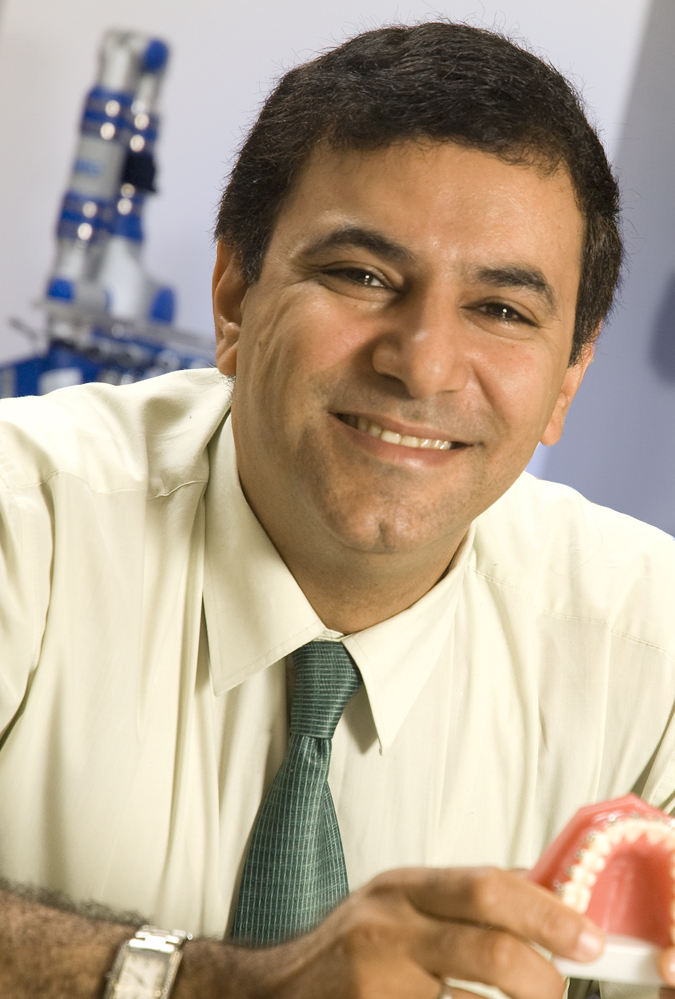
An ultrasound device developed at the University of Alberta has been shown to help patients who wear braces get faster results and avoid long-term complications, according to recently published studies.
“Not only do the teeth move faster, daily use of the device can also prevent the teeth roots from shortening,” said orthodontics professor Tarek El-Bialy.
In one recently published study, 68 patients who wore braces were followed, with half of them using the low-intensity pulsed ultrasound (LIPUS) device for 20 minutes per day. The researchers reported the ultrasound group saw an average reduction of 49 per cent in the overall treatment time compared with the control group.
El-Bialy said teeth realignment can now be completed within 12 to 18 months instead of two or three years.
In another study, the research team found a statistically significant reduction in root resorption, an issue linked to genetics and medications that can be exacerbated by orthodontic treatment and can lead to early loss of teeth in some patients.
From research concept to commercial success
El-Bialy began studying the impact of ultrasound on teeth as a student in Egypt and the United States. He joined the U of A’s Faculty of Medicine & Dentistry in 2005 and attended a staff orientation session where he met the engineers—professors Jie Chen and Ying Tsui, now associate dean of the Faculty of Engineering—who would later help him design and test the device.
“We all shared the same way of thinking, so that helped us along,” El-Bialy said.
The team patented the device with support from TEC Edmonton, a joint venture of the U of A and Edmonton Economic Development Corporation that manages the commercialization of U of A technologies.
One of the engineering master’s students, Cristian Scurtescu, graduated in 2007 and founded the company SmileSonica Inc. to continue improving, manufacturing, obtaining regulatory clearances and distributing the ultrasound device, now called the Aevo System™. In 2016, it was approved for use in Canada, Australia and Europe, and U.S. FDA approval is pending. It is available by prescription from dental and orthodontic clinics and costs approximately one-tenth of the overall cost of orthodontic treatment, according to Scurtescu. SmileSonica continues to support El-Bialy’s research whenever possible.
El-Bialy will next turn his research focus to examining how to regenerate shortened teeth roots with stem cells from the gum.
The patented ultrasound device, now called the Aevo System, was approved for use in Canada, Australia and Europe in 2016, and U.S. FDA approval is pending. (Video: Smilesonica Inc.)
Great ideas change the world, but ideas need a push forward. At the University of Alberta, we know that push has never been more important as we do our part to rebuild Alberta and keep doors of opportunity open to all. We're making research discoveries. We’re cultivating entrepreneurs. And we’re giving our students the knowledge and skills they need to turn today's ideas into tomorrow's innovations. Read more stories about U of A innovators.